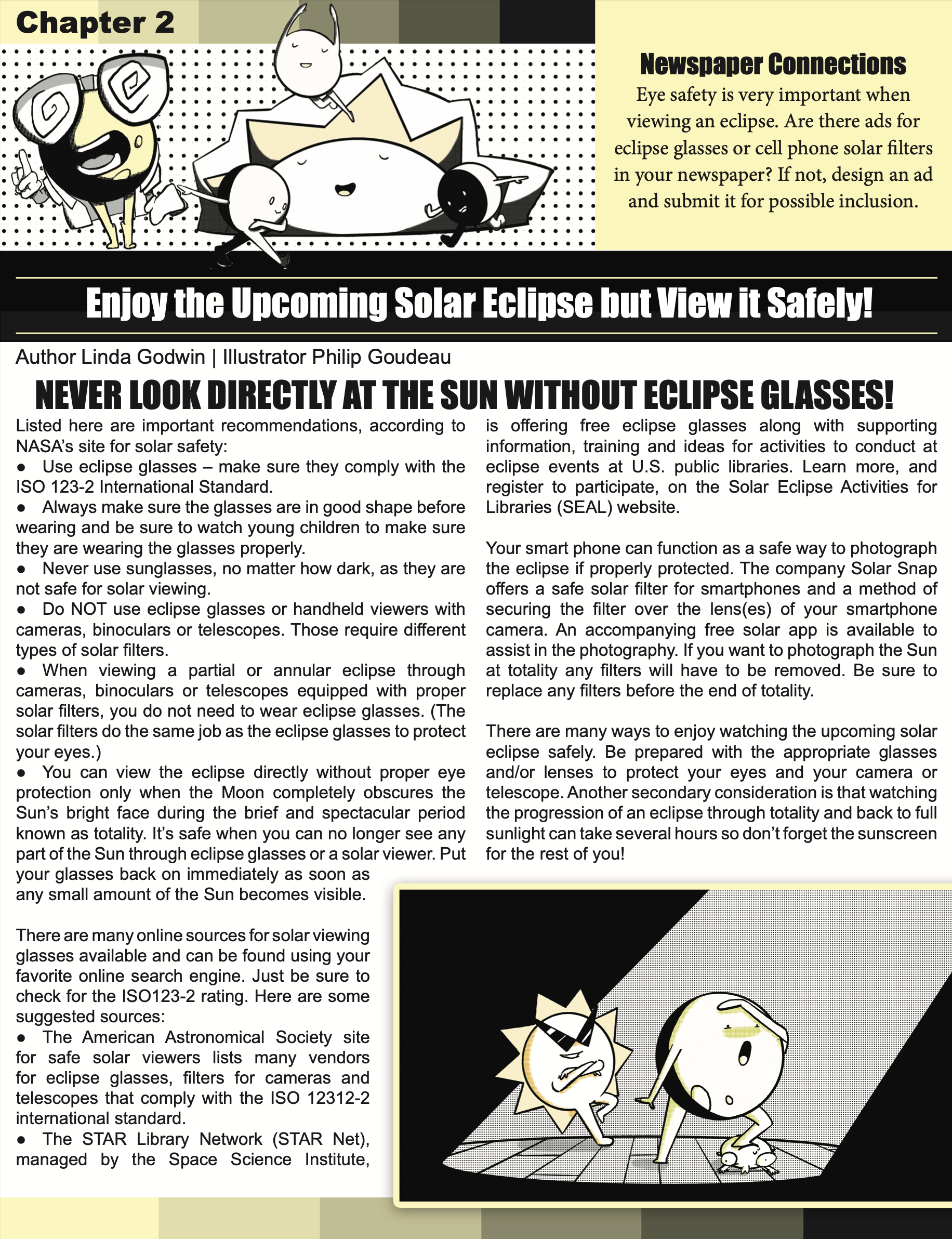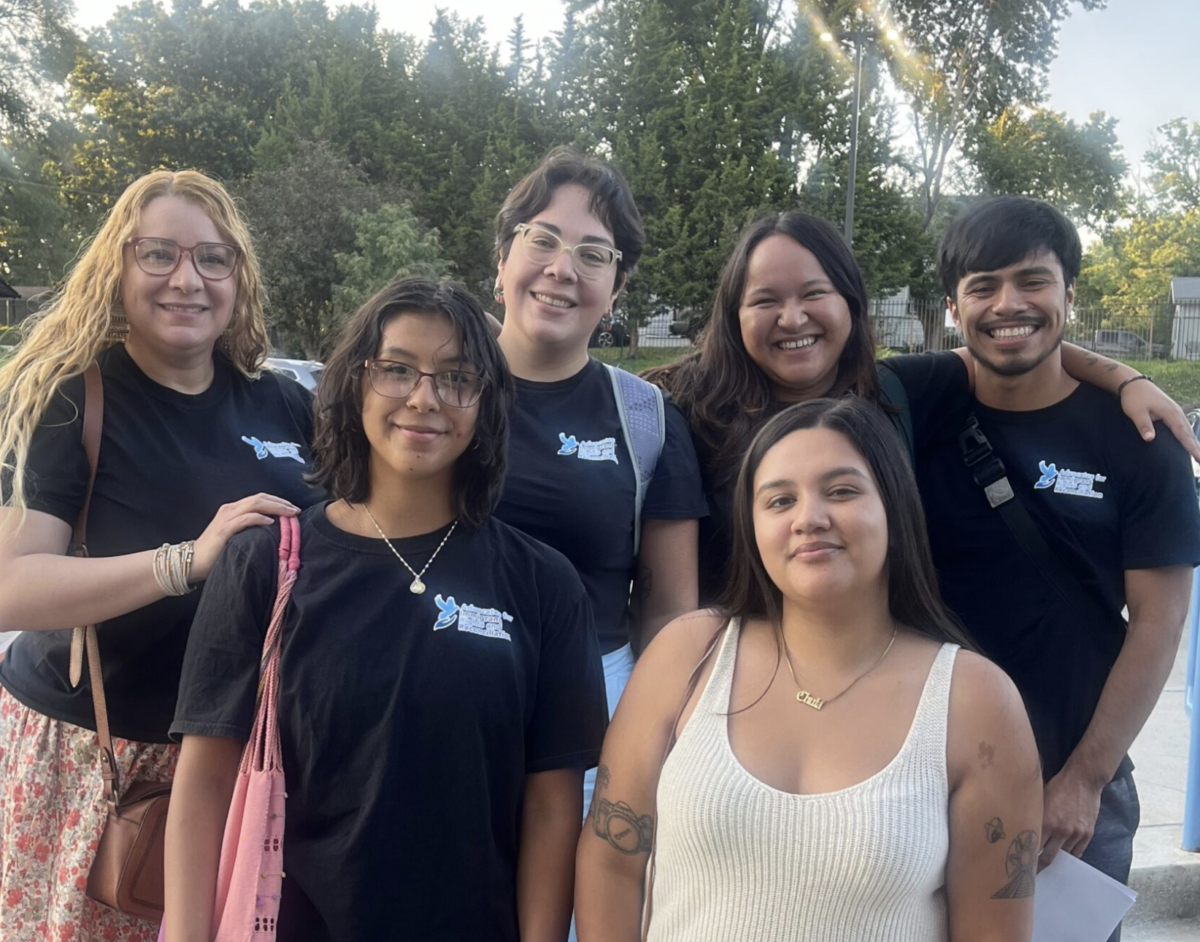
Author Linda Godwin | Illustrator Philip Goudeau
NEVER LOOK DIRECTLY AT THE SUN WITHOUT ECLIPSE GLASSES!
Listed here are important recommendations, according to NASA’s site for solar safety:
● Use eclipse glasses – make sure they comply with the ISO 123-2 International Standard.
● Always make sure the glasses are in good shape before wearing and be sure to watch young children to make sure they are wearing the glasses properly.
● Never use sunglasses, no matter how dark, as they are not safe for solar viewing.
● Do NOT use eclipse glasses or handheld viewers with cameras, binoculars or telescopes. Those require different types of solar filters.
● When viewing a partial or annular eclipse through cameras, binoculars or telescopes equipped with proper solar filters, you do not need to wear eclipse glasses. (The solar filters do the same job as the eclipse glasses to protect your eyes.)
● You can view the eclipse directly without proper eye protection only when the Moon completely obscures the Sun’s bright face during the brief and spectacular period known as totality. It’s safe when you can no longer see any part of the Sun through eclipse glasses or a solar viewer. Put your glasses back on immediately as soon as any small amount of the Sun becomes visible.
There are many online sources for solar viewing glasses available and can be found using your favorite online search engine. Just be sure to check for the ISO123-2 rating. Here are some suggested sources:
● The American Astronomical Society site for safe solar viewers lists many vendors for eclipse glasses, filters for cameras and telescopes that comply with the ISO 12312-2 international standard.
● The STAR Library Network (STAR Net), managed by the Space Science Institute, is offering free eclipse glasses along with supporting information, training and ideas for activities to conduct at eclipse events at U.S. public libraries. Learn more, and register to participate, on the Solar Eclipse Activities for Libraries (SEAL) website.
Your smartphone can function as a safe way to photograph the eclipse if properly protected. The company Solar Snap offers a safe solar filter for smartphones and a method of securing the filter over the lens(es) of your smartphone camera. An accompanying free solar app is available to assist in the photography. If you want to photograph the Sun at totality any filters will have to be removed. Be sure to replace any filters before the end of totality.
There are many ways to enjoy watching the upcoming solar eclipse safely. Be prepared with the appropriate glasses and/or lenses to protect your eyes and your camera or telescope. Another secondary consideration is that watching the progression of an eclipse through totality and back to full sunlight can take several hours so don’t forget the sunscreen for the rest of you!


















